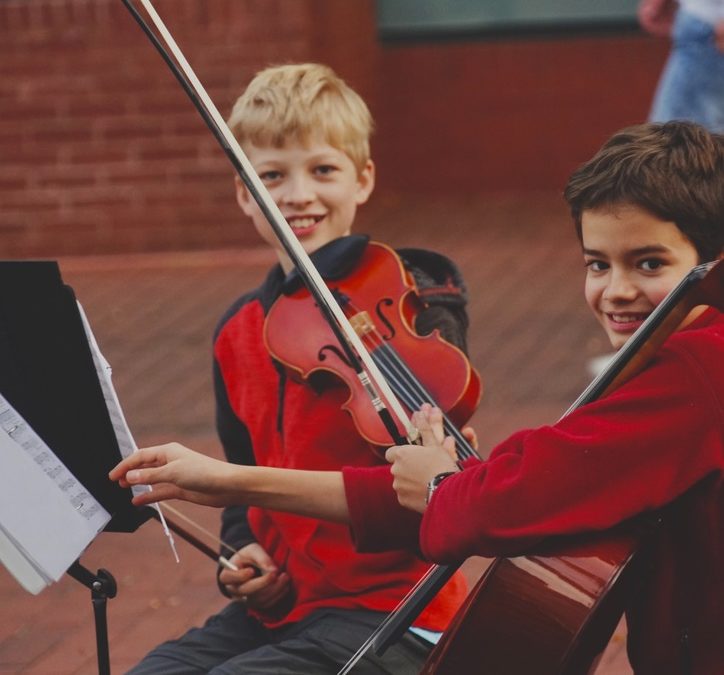Flexible Fiddling is a method I created for my elementary and middle school orchestra students. There are books for Violin 1, Violin 2, Viola, Cello and Bass. Each tune has a Building Blocks page and a String Orchestra Arrangement page. On the Building Blocks page, all students learn all the parts in unison. Students learn melody, bass line, backup, break and improvisation prompts. Then the orchestra practices this music with a backup track that plays in the classroom.
How has Flexible Fiddling helped students?
- Students are motivated
- Students are playing together and listening to each other
- Students are reading music with ease
- Students are creating their own music
- All students are successful
Students are Motivated
Students like this music. They can find these tunes on YouTube and Spotify. They are playing “real” folk music. They are inspired to practice and get it right. Students learn partly by ear. They can play more complicated rhythms and melodies than their note and rhythmic reading abilities would allow. They then are motivated to learn how to read what they can play.
Students are Playing Together and Listening to Each Other
Students use backup tracks as they learn the songs. This helps with the more complicated rhythms. They have to fit the rhythms into the beat structure. When I turn off the backup tracks, students listen across the orchestra and stay together. They know when their part is important and when it is an accompanying part. They are able to adjust their dynamics according to the needs of the music.
Students are Reading Music with Ease
Students learn the Building Blocks in unison. The way the stronger players pull the less experienced players along. The Building Blocks also have note names inside the note heads, which reinforces reading. Then, when students play the Orchestra Arrangement, they recognize what to play – melody, bass line or backup. As one student said, “You don’t need the notes written in on the Orchestra Arrangement page. Because it’s the exact same thing!” One page has scaffolding and one does not. Students develop note-reading ability.
Students are Creating their own Music
Flexible Fiddling encourages students to improvise with improvisation prompts. Students learn to change the song a little bit, something called a micro-improvisation. As they become more comfortable with this idea, they are reaching out to me with songs they have written. They realize that creativity in music is something open to everyone. And that if you work with it and play with it, you get better.
All Students are Successful
When parts are too hard or too easy, it’s possible to change them. Students know the backup and bass line. There are some first-year players in a third-year group. These students can play a part that stays out of the way of the more experienced players. I have two or three new beginners in the orchestra this year. I’ve given them simpler parts so they can still be part of the experience. They are playing the part they can play, not faking the part they can’t play.
Flexible Fiddling has exceeded my expectations. I am thrilled I wrote this out for students at this early level in their playing. They will always remember how much fun they had making music!
